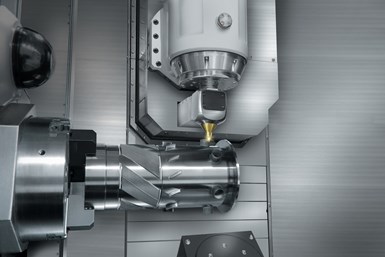DP Technology's Esprit Supports DED Additive Manufacturing
Esprit CAM introduces support for direct energy deposition additive manufacturing, offering users a full-spectrum additive solution from CAD file to finished part.
Share







Hwacheon Machinery America, Inc.
Featured Content
View More
ECi Software Solutions, Inc.
Featured Content
View More

Takumi USA
Featured Content
View More
DP Technology, in conjunction with Grenoble University, has developed a commercial version of its Esprit CAM solution that supports additive direct energy deposition (DED) cycles. Esprit’s additive capabilities are the product of the team’s experience in toolpath generation, and includes the same user interface that users expect from the software. The product release includes three-axis, four-axis and five-axis DED support. Combined with the subtractive processes and embedded into a single software, the solution is designed to bring a full spectrum of support to hybrid manufacturing.
Esprit’s additive DED cycles include additive simulation and verification, as well as global support from the company’s technical teams.
DP Technology validated its postprocessor through collaboration with major machine manufacturers and educational institutions, including Grenoble University, a leading research institution on additive DED technology.
Related Content
-
Generating a Digital Twin in the CNC
New control technology captures critical data about a machining process and uses it to create a 3D graphical representation of the finished workpiece. This new type of digital twin helps relate machining results to machine performance, leading to better decisions on the shop floor.
-
ERP Provides Smooth Pathway to Data Security
With the CMMC data security standards looming, machine shops serving the defense industry can turn to ERP to keep business moving.
-
Can AI Replace Programmers? Writers Face a Similar Question
The answer is the same in both cases. Artificial intelligence performs sophisticated tasks, but falls short of delivering on the fullness of what the work entails.




























.jpg;maxWidth=300;quality=90)




